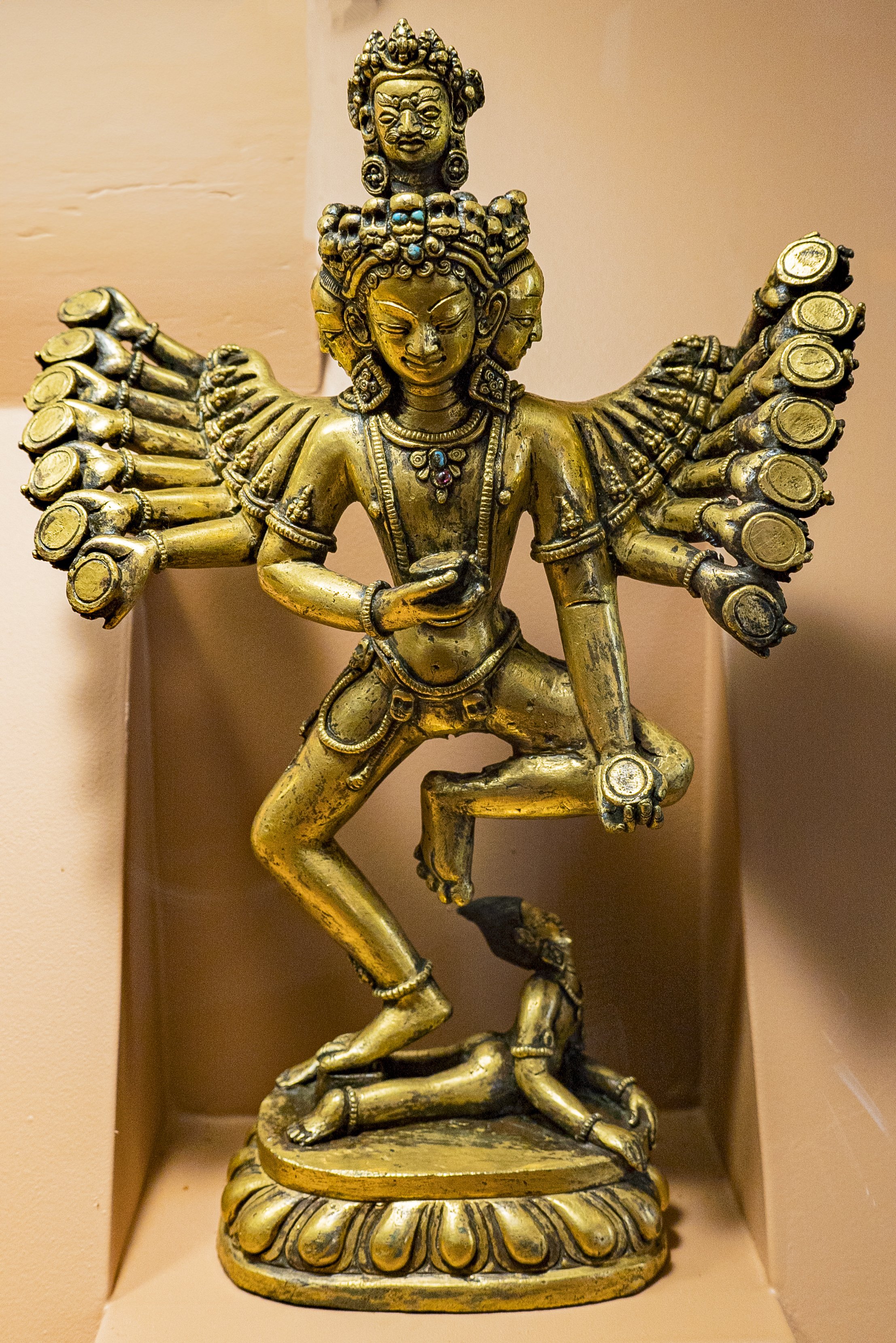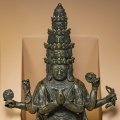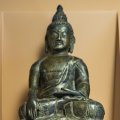Patan Museum (Nepal): photo 59
Photo 59 of 212 in Gallery: Patan Museum (Nepal)

Image title: Hevajra (Nepal, 20th century)
Description of the photo
This Copper sculpture shows an image of Hevajra, from the 20th century origination from Nepal.—Materials used: Copper, gilt, precious stones or semi-precious stones.
Description: With four faces the Buddhist god Hevajra can express more emotions than with one and his sixteen hands display more symbols than with two. In paintings and in some sculptures Hevajra carries human or animal representations in each skull cup (kapala) although in this sculpture they are not represented.
Notes: Why do gods have multiple heads and hands? In the later development of Hindu and Buddhist practice, known as Tantrism or, in Vajrayana Buddhism, “The Way of the Thunderbolt”, deities are given multiple heads and limbs to better express their complex personalities and their multiple functions.
Gallery information:
The Patan Museum is located on the Durbar square of Patan (Lalitpur/Lalitapura, Kathmandu, Nepal) which is associated Keshav Narayan Chowk (Keshavnarayan)—a form of Lord Vishnu. Being listed as a World Heritage Site, the whole of Durbar square is filled with exquisite temples, sculptures and other ancient structures, of which the ancient history history can be traced to the Malla Kings of Lalitpur. It is an important site for both Buddhism and Hinduism.
Photo details:
Date: 2019-12-02
Camera: SONY ILCE-6400
Exposure: 1/25
Aperture: f/4
ISO: 100
Focal length: 18mm
High resolution:
Download file
Size: 4.03 MB
Resolution: 2214 x 3318
© Photograph by Gabe Hiemstra.
License: CC BY-NC-ND 4.0

